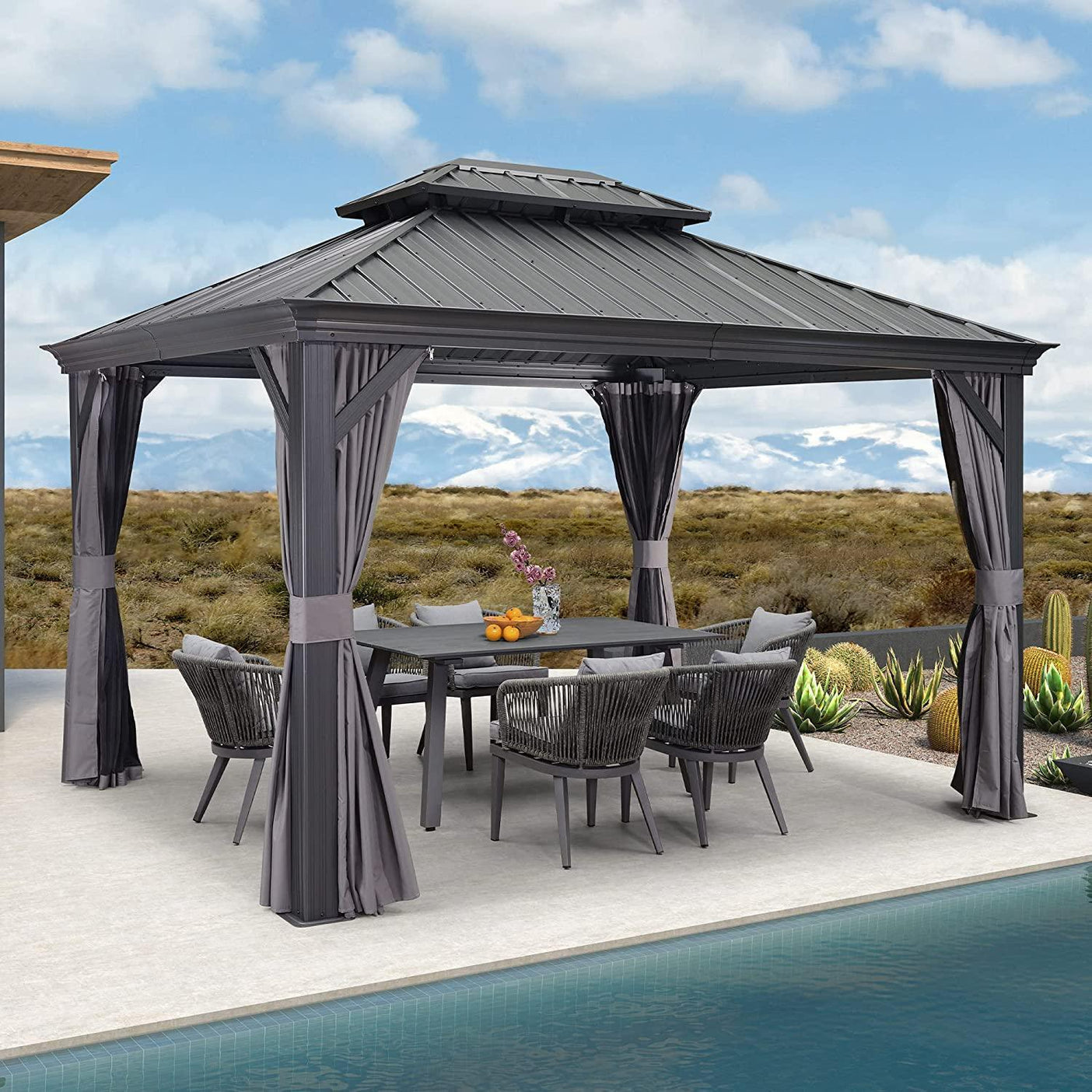Discover the Secrets to Choosing the Perfect Double Top Gazebo for Windy Days!
Choosing the right gazebo for windy conditions is crucial for ensuring safety and longevity. Many outdoor enthusiasts have experienced the frustration of a flimsy gazebo being upended by sudden gusts, leading to potential damage and safety hazards. When the wind picks up, the last thing you want is for your outdoor haven to become a liability. A well-selected double top gazebo can provide the perfect balance of aesthetics and functionality, especially when engineered to withstand the elements. Understanding the specific features that enhance stability and safety in windy weather is essential for any discerning buyer. This article will delve into the characteristics that make a double top gazebo ideal for windy conditions, helping you make an informed decision for your outdoor space.

Understanding Wind Resistance in Gazebos
Wind resistance is a critical factor to consider when selecting a gazebo, as it directly impacts the structure's stability during adverse weather conditions. Wind can exert significant pressure on a gazebo, and understanding how this force interacts with the materials and design helps in choosing the right model. Various factors contribute to a gazebo's ability to withstand wind, including the strength of the materials used, the design of the frame, and the overall weight of the structure. A gazebo with a low profile and a solid base will fare much better in strong winds than one that is lightweight and poorly constructed. Additionally, the orientation of the gazebo can influence its wind resistance; for instance, positioning the structure to face away from prevailing winds can help reduce wind exposure.
Key Characteristics of a Wind-Resistant Double Top Gazebo
When searching for a double top gazebo that can endure windy conditions, several key features should be prioritized. Firstly, the frame construction should be robust, ideally made from materials that resist bending and breaking. Steel or heavy-duty aluminum frames are popular choices due to their strength and durability. Another critical aspect is the weight of the gazebo; heavier models are inherently more stable. Additionally, anchoring options play a vital role in securing the gazebo against wind. Look for gazebos that offer multiple anchoring points and options for securing them to the ground, such as stakes or weighted bases. Furthermore, the design of the canopy itself can impact wind resistance. A double top canopy allows for better air circulation while still providing shelter, minimizing the risk of the canopy acting as a sail in strong winds.
Material Choices
Choosing the right materials is fundamental to the wind resistance of a gazebo. Durable materials such as aluminum and steel can withstand significant stress from wind gusts without warping or breaking. In addition to the frame, the fabric used for the canopy also matters. Weather-resistant fabrics treated to repel water and resist fading will not only last longer but also reduce the risk of sagging or tearing during windy conditions. Having a robust structure made of high-quality materials ensures that your gazebo can endure the elements over time, providing a reliable outdoor space.
Design Elements
Design features can significantly enhance a gazebo's stability in windy conditions. A double top canopy is particularly advantageous, as it allows wind to pass through rather than exerting pressure on the structure. Additionally, incorporating wind vents is crucial; these vents enable air to flow through the canopy, reducing wind resistance and preventing uplift. A low-profile design is another element that adds to stability, as it lowers the center of gravity and minimizes the chances of being lifted by gusts. Together, these design elements work harmoniously to create a shelter that not only looks good but also stands firm against the winds.
Proper Installation and Maintenance Tips
Even the most robust gazebo can succumb to the forces of nature if not installed and maintained properly. Correct installation is essential for optimizing wind resistance. Begin by selecting a suitable location that is as sheltered from prevailing winds as possible. Secure your gazebo to the ground using anchors designed for your specific surface, whether it be grass, concrete, or gravel. Regular maintenance is equally important; check for any loose fittings or damaged components and address these issues promptly to ensure your gazebo remains safe and stable. Additionally, if strong winds are predicted, consider taking down the canopy or securing it more tightly to prevent damage. Keeping your gazebo in good condition will extend its lifespan and maintain its ability to withstand windy conditions.
Final Thoughts on Selecting Wind-Resistant Gazebos
In summary, selecting the best double top gazebo for windy conditions requires careful consideration of various factors, including wind resistance, material quality, design features, and proper installation. By focusing on these characteristics, you can ensure that your gazebo remains a safe and functional addition to your outdoor space. Remember, a well-chosen gazebo not only enhances your backyard but also stands the test of time against the elements. Take the time to evaluate these features and make an informed decision; your future outdoor gatherings will thank you for it!














